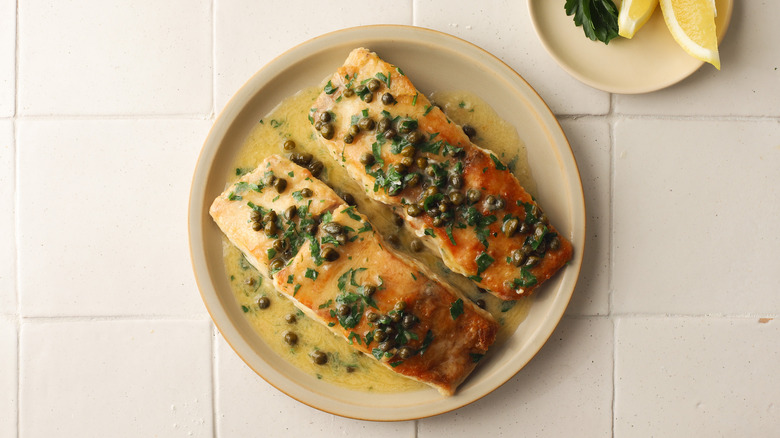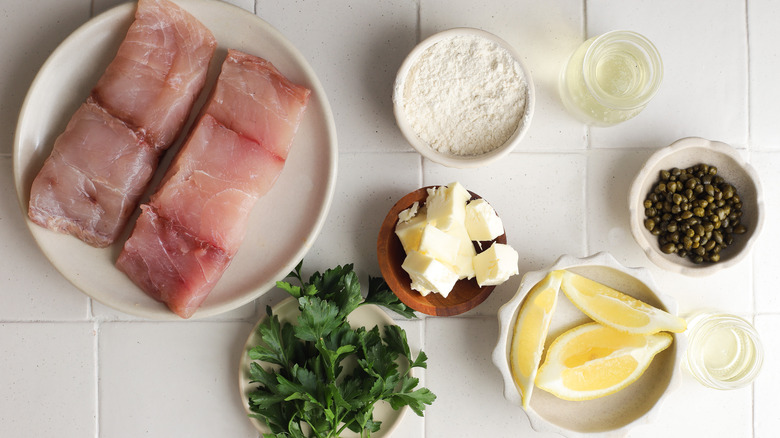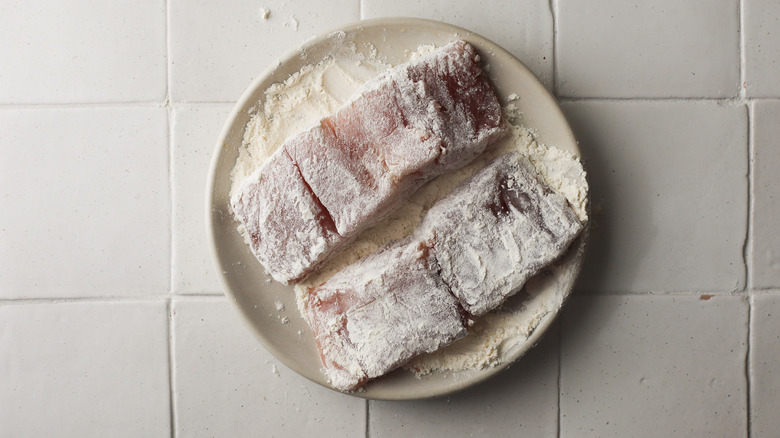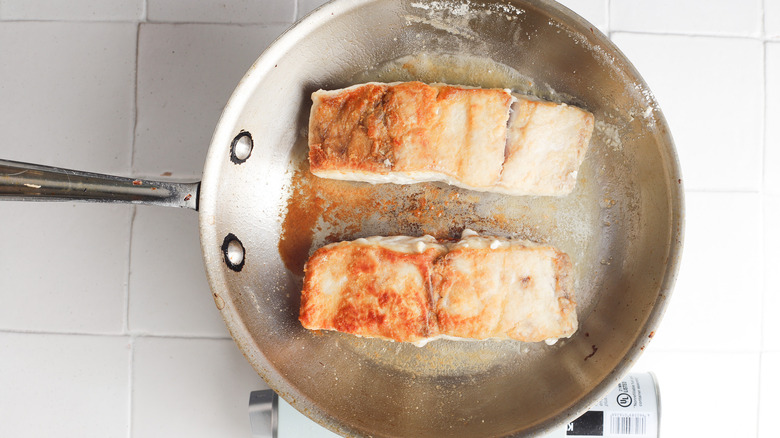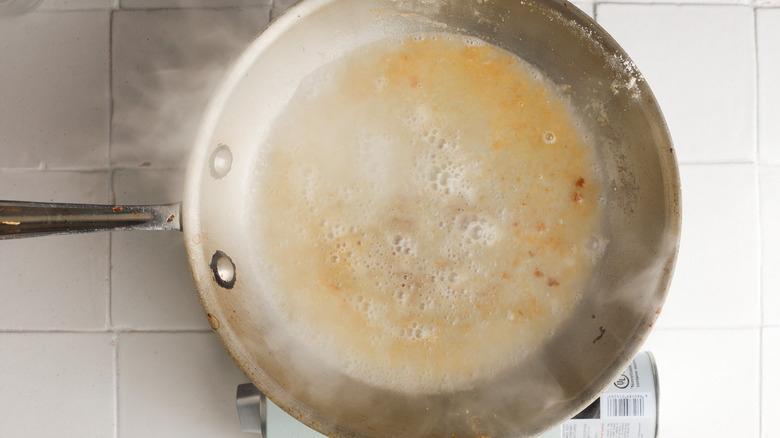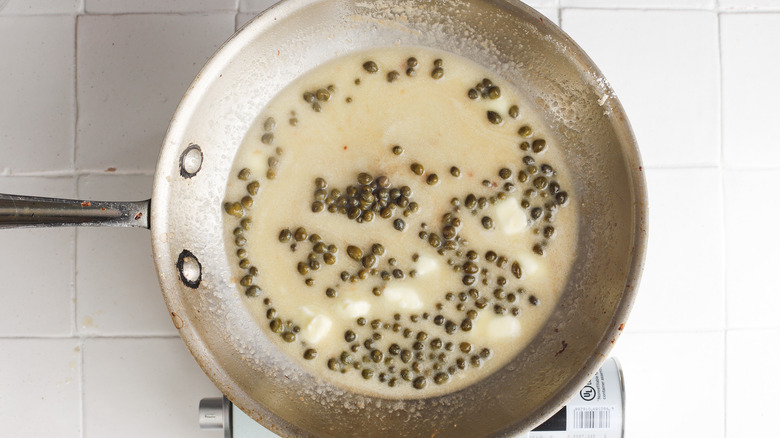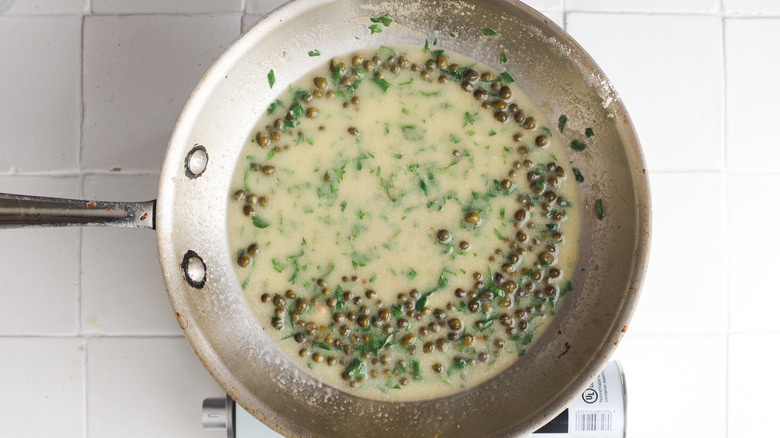Simple Fish Piccata Recipe
Piccata, a culinary term of Italian origin, traditionally refers to a preparation method primarily involving meat or fish sautéed and served in a sauce containing lemon, butter, and capers. While the classic version often uses veal or chicken, the bright and tangy flavors of the piccata sauce are versatile enough to complement a wide array of seafood, including sea bass. Regardless of the primary protein, the characteristic lemon-caper sauce is what defines a dish as "piccata."
This dish is big on flavor but easy enough to make on a busy weeknight. A nice fish piccata can be served with a variety of sides from roasted asparagus to creamy polenta to mashed potatoes. In most classic Italian restaurants, piccata dishes are served over a big plate of garlic butter noodles.
Whichever way you choose to serve it, once you get the hang of this sauce, it's sure to become part of your regular rotation.
Gather the ingredients for simple fish piccata
Fish piccata traditionally features a mild white fish that can hold up well to pan-frying and absorb the tangy flavors of the lemon-caper sauce. It's essential to ensure that the fish you choose is fresh, as the simplicity of the piccata preparation will highlight the quality of the fish. Sea bass and tilapia are both excellent options.
The key ingredients for making any kind of piccata are lemon, capers, butter, and white wine. Fresh lemon juice is preferable to bottled as the flavor is much stronger and more aromatic. The butter should be regular, unsalted, and very cold. "Cold butter will emulsify into the sauce slowly, while room temperature or melted butter is likely to break the delicate sauce completely," says recipe developer Taylor Murray. Opt for dry white wine. The quality doesn't need to be excellent, but it should be something you would want to drink on its own. All-purpose flour will coat the fish and help thicken the sauce, and a bit of fresh chopped Italian parsley adds a nice green color to the finished sauce.
Dredge the filets
Place the flour on a large plate. Carefully pat each filet dry, then place in the flour, turning them to coat. Dredging the fish accomplishes two tasks in this recipe: creating a thin crust to promote even browning, and it also introduces flour to the pan, which will later help to thicken the sauce.
Cook the fish
Start by selecting a large, preferably heavy-bottomed skillet, such as cast iron or stainless steel, and place it on the stove over medium-high heat. Pour in the olive oil, ensuring the skillet's bottom is uniformly coated. Wait for the oil to reach the right temperature; it's ready when it exhibits a shimmer or a water droplet sizzles upon contact. Once heated, carefully add the fish filets with tongs or a spatula, ensuring they're spaced apart and not overlapping. Allow them to cook undisturbed for roughly 3 minutes, or until their undersides turn a rich golden brown.
Gently flip the filets and sear the opposite side for an additional 3 minutes, adjusting the time slightly for thicker or thinner pieces. When both sides are browned and the fish feels firm, lift each filet using a spatula and place them on a clean plate to rest momentarily, letting the residual heat complete the cooking process.
Deglaze the pan
Carefully discard any excess oil in the skillet, but don't clean it out. A teaspoon is fine, but any more than that will have to go. Then, pour the white wine into the pan. As the wine begins to sizzle, vigorously mix with a whisk, freeing any flavorful bits adhered to the skillet's base. Keep simmering until you see the amount of wine decreasing, aiming for a reduction of approximately half.
This step not only concentrates the wine's flavor but also captures and melds the savory nuances of the previously seared fish. When the wine is reduced, it takes on a consistency that helps create a creamy, luxurious sauce.
Add the butter
Turn the heat on the pan down to low. You're now going to build the sauce, and too high of a temperature can cause it to break. Add cold cubes of butter and the capers. Whisk as the butter slowly melts. You should see a thick, glossy sauce forming. Make sure to whisk continuously to avoid any melted pools of butter forming. Adding the capers at this step ensures that some of the salt in them transfers to the rest of the sauce, ensuring an evenly seasoned final dish.
Finish it up
Once the butter is fully melted, add the lemon juice and parsley and stir to combine. Give the sauce a good taste — it should be bright, acidic, and sufficiently salty thanks to the capers. If you think it could benefit from a bit more salt, go ahead and add it now.
When the sauce is seasoned to your liking, add the fish back to the pan and turn to coat. Spoon extra sauce over the top of the fish. Because this is an emulsified sauce, it won't fare well after being refrigerated and reheated later. It will still taste fine and be edible, but that distinctive creamy texture will be lost, so serve it immediately for best results. When choosing a wine to pair with fish piccata, look for white wines with good acidity that can mirror the tang of the dish. Avoid heavily oaked or overly sweet wines as they can clash with or overpower the dish's delicate flavors.
Simple Fish Piccata Recipe
This fish piccata recipe features a mild white fish that can hold up well to pan-frying and absorb the tangy flavors of the lemon-caper sauce.
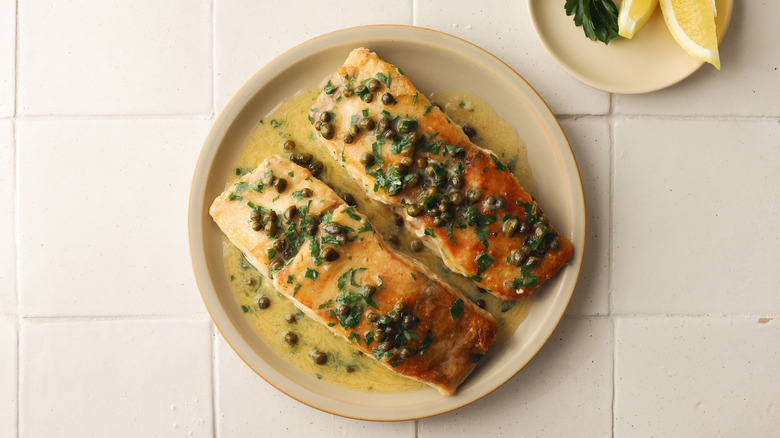
Ingredients
- 2 (6-ounce) white fish filets
- 1/4 cup all purpose flour
- 2 tablespoons olive oil
- 1/3 cup dry white wine
- 2 tablespoons capers, drained
- 5 tablespoons cold unsalted butter, cut into cubes
- 2 tablespoons lemon juice
- 2 tablespoons chopped flat leaf parsley
Directions
- Dredge the filets in flour, shaking off the excess.
- In a large skillet, heat the olive oil over medium-high heat.
- Add the filets to the pan and cook until browned, about 3 minutes per side. Once cooked, remove the filets from the pan and set them aside on a plate.
- Pour out any excess oil, then add in the white wine. Whisk vigorously while the wine reduces, scraping up any bits stuck to the bottom of the pan. Continue to simmer and until the wine is reduced by half.
- Turn the heat to low and add in the capers and butter. Whisk continuously until the butter is fully melted into the sauce.
- Stir in the lemon juice and parsley.
- Add the fish back into the pan and turn to coat, spooning extra sauce over the top.
Nutrition
| Calories per Serving | 633 |
| Total Fat | 45.5 g |
| Saturated Fat | 20.8 g |
| Trans Fat | 0.0 g |
| Cholesterol | 161.4 mg |
| Total Carbohydrates | 14.7 g |
| Dietary Fiber | 0.9 g |
| Total Sugars | 0.9 g |
| Sodium | 299.3 mg |
| Protein | 36.5 g |
